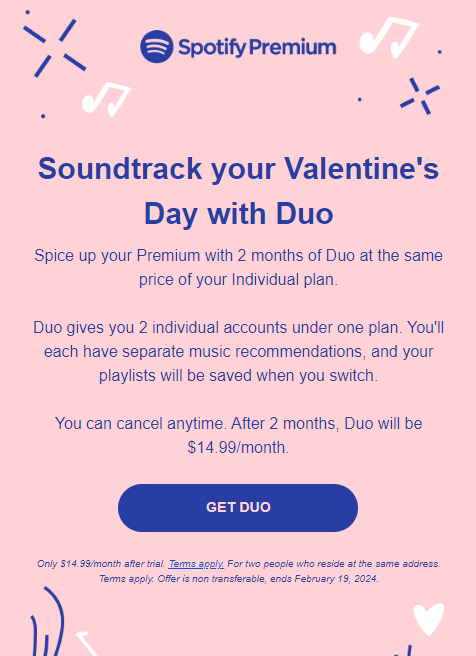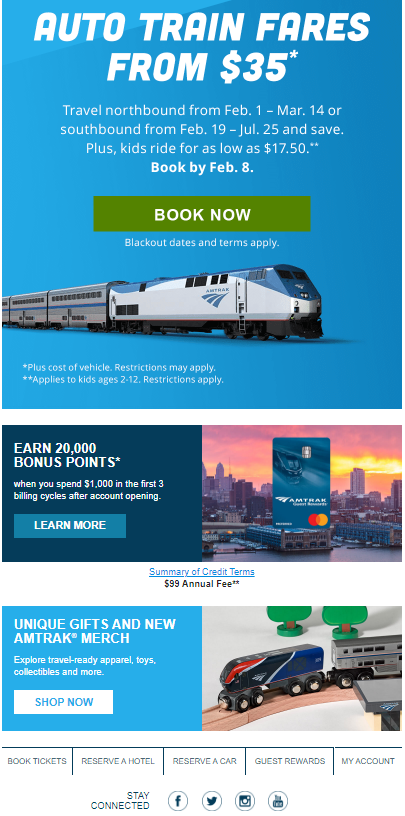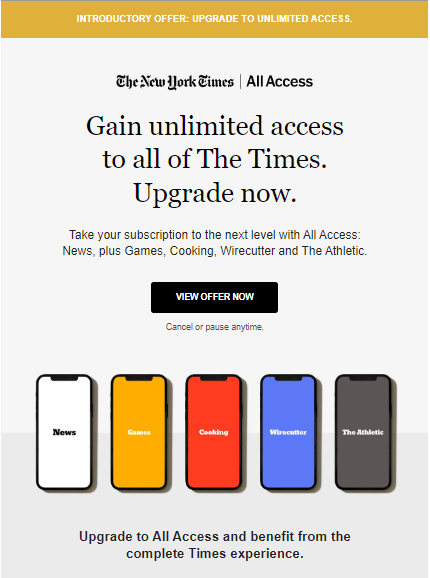
Email is one of the most effective — and efficient — marketing channels available. With an average return on investment (ROI) of $36 for every dollar spent, it’s well worth the effort of building a subscriber list and developing email marketing campaigns. However, you must have email marketing leads before you can start sending sales emails.
An email marketing lead provides you with their email address and agrees to receive marketing emails from your brand. Usually, a lead is familiar with your organization and hopes to receive some benefit from subscribing to your list.
When you’re beginning marketing, email marketing leads are essential to your campaign’s success. Without leads, you won’t have anyone to send your messages to, and you won’t see the benefits of email marketing you’re hoping for.
Understanding different types of leads
There are several types of email marketing leads:
- Marketing qualified leads (MQL): An MQL will likely become a customer. They’ve shown interest in your brand, such as joining your email list, browsing your website, or interacting with social media posts.
- Sales qualified leads (SQL): An SQL demonstrates a strong interest in purchasing. They’re ready to talk to someone on your sales team about the next steps.
- Service-qualified leads: A service-qualified lead is similar to an SQL. They’re ready to buy a service and talk with a sales rep.
Best practices for email lead generation
Consider these email marketing tips for lead generation.
Targeting the right customers
Start by outlining the attributes of your typical client, such as their demographics, interests, pain points, and shopping behavior. That information can help you design lead-generation efforts to match your target audience.
Creating valuable opt-in offers
Sharing an email address is pretty personal. It’s not quite the same as a phone number or address, but it gives brands a means to contact customers directly.
To diminish any hesitancy clients experience when sharing their email addresses, show them how they’ll benefit from subscribing with an opt-in offer. For instance, you might provide a discount coupon, access to a premium webinar, or a copy of your brand’s ebook.
Designing simple and effective opt-in forms
Keep your opt-in form simple and straight to the point. While you can use the opt-in form to get lots of details about your audience, overly complex forms can hurt your lead-generation efforts since they require more time and effort to complete.
At this stage, asking for the subscriber’s name, email address, and consent is enough. Once they subscribe, you can use emails to encourage them to update their preferences or share more about themselves.
Optimizing landing pages for conversions
Most marketing emails include some form of call to action (CTA), such as making a purchase, scheduling an appointment, or joining a webinar. Whatever your brand’s CTA is, include a unique link to a dedicated landing page. That way, you can track the conversions your email generates.
To minimize any friction, optimize your landing page for easy navigation. You don’t want your client to work too hard to take the next step. Simple images, straightforward messaging, and visible links streamline the conversion process and improve results.
Employing lead scoring and email automation
Some customers will show strong interest in your products, while others will need more encouragement. To balance your marketing efforts, consider lead scoring.
Lead Scoring refers to rating your leads according to their demonstrated buying interest. To start the process, identify the attributes of high-quality email marketing leads and less-quality ones and use them to rank your clients. Higher scorers might be ready to speak with your sales team, while lower scorers might require some nurturing before they buy.
You can use email marketing automation tools to establish email sequences for each type of customer, whether highly qualified or early in the buyer’s journey. Automation saves lots of time and keeps communication rolling as your clients familiarize themselves with your brand.
Timing your emails for maximum engagement
You want subscribers to read your emails, so choosing the right send time is crucial. Opt for times when subscribers are likely to check their inbox — before work, at lunch, or in the early evening. Avoid sending emails in the middle of the night since clients may overlook your message.
Read now: The Best Time to Send a Marketing Email: A Complete Guide
Personalize your messages to increase open rates
Find ways to personalize emails. That way, your email feels more authentic and genuine to customers. Use your customers’ data, such as their name, location, and prior purchase history, to craft personalized subject lines and content.
Sharing relevant and valuable content
When your messages consistently provide compelling content, subscribers will read them. Search for ways to offer value for your audience, such as sharing a recent blog post, important industry news, a new product release, or a one-time discount. Varying your content may improve client engagement and open rates.
Read now: How to Use Automation to Make Emails More Relevant
Conducting A/B testing
Sometimes, consumers react differently to various email elements. For instance, a picture might generate fewer click-throughs than a video.
To maximize campaign results, consider sending small audience segments slightly different emails to test their reaction. You can use the results to decide on a final message you can send to your entire subscriber list.
Read now: What is A/B Testing in Email Marketing?
Cleaning up your email list regularly
Removing invalid subscriber addresses is vital since they can negatively impact your sender’s reputation with email service providers. You’ll know an email address is no longer working if you receive a hard bounce notification.
Also, remove any people who ask to unsubscribe immediately. You don’t want to risk any complaints.
Read now: How to Clean Your Email List (and Why You Need Regular Scrubbing)
Avoiding “no-reply” email addresses
A no-reply email address limits two-way communication between the sender and the recipient. Thus, it may hurt your marketing efforts since subscribers must take additional steps to reach you.
Instead of using a no-reply email address, choose a regular one with two-way communication. That way, your subscribers can reach you without hassle.
Read now: No-Reply Email: Why It’s Bad for Business & How to Avoid It
Segmenting emails according to subscriber behaviors
Identifying certain behaviors a subscriber exhibits, such as the pages they visit on your website, can help you personalize your email marketing messages to align with their interests.
Suppose a consumer subscribes to your email list after browsing a few products on your website. You might use their browsing activity to send a personalized welcome email that includes a discount on one of the products they looked at, encouraging a sale.
Read now: Email List Segmentation From A (as in Age) to Z (as in Zip Code)
Optimizing emails for mobile users
Many people use smartphones, tablets, and other mobile devices to check their email. Use a responsive, flexible template that fits mobile devices and PCs to ensure your message remains readable across devices. That way, your subscribers can easily read your message and take action if they want to, even if they’re viewing it on a small screen.
Read now: What is a Mobile-Responsive Email Template? (And Why You Need One)
Designing emails for lead generation
To generate email marketing leads, keep these considerations in mind when writing emails.
Writing compelling subject lines
Recipients won’t open your email unless they have a reason to, so you’ll need to use your subject line to grab their attention. You might create a sense of urgency with a limited-time deal or include the recipient’s name for greater personalization.
Read now: 12 Tips for Creating the Best Email Subject Lines (with Examples)
Ensuring email brevity
The average subscriber won’t spend hours scrutinizing your message. They might look at it briefly before moving on to their next email. So, save the detailed info for an in-depth guide or article. Use email for short messages your readers can quickly understand.
Take a look at this email from Spotify. Note that it’s short and divides the text into multiple paragraphs for easy reading on mobile devices.

Utilizing imagery and social integration
Images, graphics, and videos capture the reader’s attention. You can use them to spruce up your message, showcase products, or break up text. Consider using imagery to help your message stand out from other brands.
If you have social media accounts, you can link to them from your email. That way, subscribers can click on them to follow your brand on LinkedIn, Facebook, Instagram, X, or other platforms.
This email from Amtrak uses train imagery to capture the reader’s attention. At the bottom, readers can click on the social profile links to visit Amtrak’s accounts.

Effective call-to-action (CTA) placement
Your email should include a clear CTA that’s easy to act on. Make sure it’s visible and tells the reader what to do — shop now, learn more, book an appointment, or some other activity.
This email from The New York Times places the CTA right in the middle of the message and uses clear language telling the reader what to do — view the offer now.

Use of software in email lead generation
Software tools are available to streamline email lead generation processes and enhance results.
Template builders and email automation platforms
Designing an email is super easy with the correct email marketing software. Constant Contact includes dozens of fully customizable templates to share your message. It can also automate emails, allowing you to schedule messages in advance, set up drip campaigns, and trigger emails based on a subscriber’s actions.
Spell check and grammar check tools
Before sending an email, check it for spelling or grammar errors. Grammarly offers a free spelling and grammar tool that catches mistakes.
Email tracking software
You’ve sent your email — now what? Hopefully, you have a tracking tool to monitor open rates, click-throughs, and conversions. Constant Contact includes extensive analytics options to review your campaign results.
How to generate leads for email marketing
You can attract new subscribers to your email list in a few simple ways.
- Identify and target your audience: Create buyer personas that reflect your typical customers. Then, encourage people with similar attributes to sign up.
- Create irresistible offers and content: The more unique and valuable your content is, the more likely your subscribers are to read it!
- Utilize email ads for lead capture: Some email service providers allow you to place ads directly in a consumer’s inbox. If you’re willing to spend a few bucks, it can help grow your subscriber list. Just pay attention to your cost per lead for email marketing.
The role of email automation
Lean on email automation tools to enhance your processes and save time. Schedule your emails in advance through automation tools. You can use the tools for email sequences or drip campaigns.
AI can help you with basic email tasks, like creating subject lines. You can incorporate dynamic content for greater personalization among your audience.
Brands with multiple marketing channels also benefit from a customer relationship management (CRM) system that tracks client interactions and saves them in one place.
Additional lead generation techniques
There are several other ways you can generate email marketing leads.
- Outbound email lead generation: Did a client request something from you but neglect to sign up for your email list? Include a CTA in your reply message encouraging them to join.
- Signup forms in outgoing emails: An interactive email signup form within an outgoing message streamlines the process so the recipient can join without taking multiple steps.
- Social media: Use your social media accounts to promote your email list — an easy way to get free email marketing leads.
Measuring and analyzing email lead generation success
As your email campaign gains steam, use analytics to set benchmarks and measure results.
- Key performance indicators (KPIs): Open rates, click-throughs, and conversions provide data you can use to evaluate performance.
- Email analytics: If your analytics don’t meet your expectations, identify ways to improve your campaign. A/B testing can help you test different message elements to enhance results.
- Email marketing benchmarks: Some industries see higher open rates and conversions than others. You can review Constant Contact’s average industry rates to compare.
Advanced email marketing techniques
You can try several advanced email marketing methods when you’re ready to take your campaign to the next level.
- Personalization strategies: As you gather more information about your subscribers, use it to add a personal touch to your messages.
- AMP emails: An AMP email includes interactive elements, like sign-up forms, appointment bookings, and other features, so readers don’t need to click on a link to take action. With AMP, you can significantly increase conversion rates.
- Email gamification: Games and contests encourage subscriber engagement with your brand.
- Transactional emails: Use transactional emails anytime a customer takes a specific action with your organization, like resetting their account password or purchasing. This is a great email marketing B2B lead generation strategy.
Start your email lead generation efforts today
Email lead generation helps you build an attentive audience you can turn into paying customers. To attract quality leads, identify the characteristics of your target clients and cater to them. Encourage signups through your website, physical store, and social media accounts. As you perfect your campaign strategy, you can try more advanced tactics.




